The Donelson and Hermitage communities share in a rich history of the settling of Middle Tennessee and development of Nashville.
Colonel John Donelson (circa 1725-1786) was a land surveyor, an iron manufacturer, and a member of the Virginia Assembly before becoming one of the two founding fathers of Nashville.
Aboard his flagship, the "Adventure," Colonel Donelson led families on an historic river voyage to the first permanent settlement on the Cumberland. Colonel Donelson and his wife Rachel Stockley (circa 1730-1801) had eleven children. Their seven sons and four daughters were all born in Virginia and all traveled from Watauga settlements in east Tennessee to the new Cumberland settlement. In fact, all of their children, except for one son who went overland with James Robertson, were on the historic river voyage, including twelve-year-old Rachel.
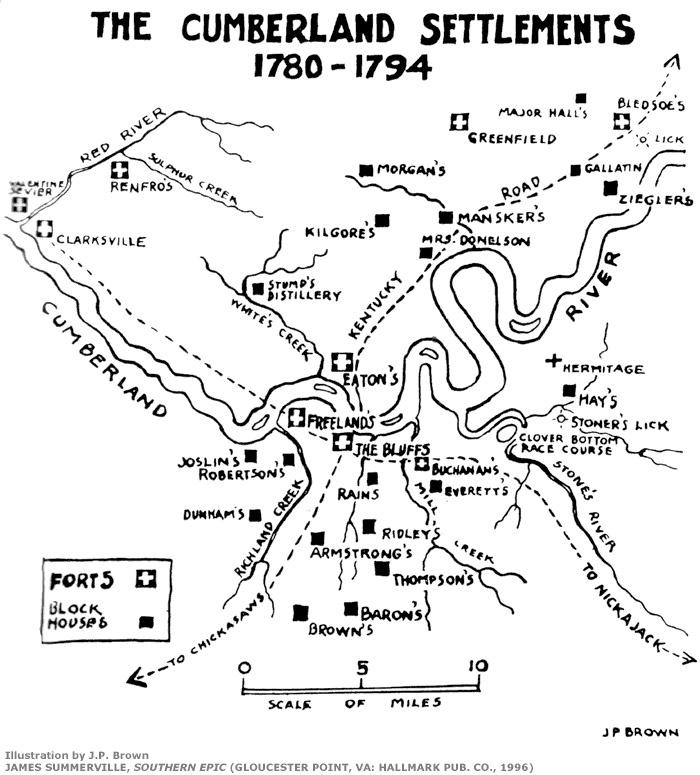
Shortly after arriving in Nashville, Colonel Donelson moved his family about 10 miles up the Cumberland and settled at Clover Bottom on Stone's Rivers. Indian attacks and floods soon forced the Donelsons to abandon their initial settlement and move first to Mansker's Station and then to Kentucky. Colonel Donelson's interest in the Cumberland area continued and he acquired land in the vicinity of what became the site of the Hermitage. The Donelson family returned to stay in 1786, but unfortunately without Colonel Donelson who was mysteriously killed on his way back to rejoin his family in Nashville. The community of Donelson was named after the area's first family of settlers.
The Donelson name figured prominently in early Tennessee history. The sons and daughters of Colonel John Donelson and Rachel Stockley, the second generation of the Tennessee Donelsons, produced approximately 63 children The Donelsons were pioneers, Indian fighters, professionals, businessmen, soldiers, and politicians, and always aligned with General Andrew Jackson. Just as the successful voyage of the "Adventure" placed the Donelson name in the pages of American pioneer history, the marriage of Rachel Donelson to Andrew Jackson, placed the Donelson name in the pages of American political and presidential history.
(Excerpt from Nashville Public Television "Donelson Family")
Donelson-Hermitage Architectural Points of Interest
(Excerpts from “Nashville Architectural Points of Interest” by Carroll Van West, PhD.)
Donelson Sites
Two Rivers Mansion (1859) 3130 McGavock Pike

David H. McGavock, a wealthy planter, constructed this valuable example of the transition from Greek Revival to Italianate style in Nashville’s late antebellum plantation architecture. The plantation’s land came from the Harding family, through the marriage of Willie Elizabeth Harding to McGavock in 1850. The name Two Rivers comes from the close proximity of the Cumberland and Stones rivers. Adjacent to the mansion is a two-story Federal brick dwelling, with a hall and a parlor plan. Evidence indicates that this early dwelling was built by David Buchanan in 1802. After the construction of Two Rivers, it became a slave quarters and dependency. In the late nineteenth century, the mansion became the focal point of a 1,1000-acre estate named the Two Rivers Stock Farm. This prosperous livestock and dairy farm lost many buildings and animals during the tornado of 1933. But the land stayed under cultivation until 1966 when the Metropolitan Government bought the house and 447 acres of land for just under one million dollars. Officials kept the house and fourteen acres for public use as a site for special events. The remaining acreage became the land for the Two Rivers golf course, a city park, and two large school lots. www.friendsoftworiversmansion.org
Buchanan Log House(1807-08) 2910 Elm Hill Pike
James Buchanan built this log dwelling, with limestone foundation and chimneys, which served as his residence but also travelers along the adjacent road along the Cumberland River. Buchanan, who married Lucinda East in 1810, had a large family, and by 1820 he had expanded the original house. The two building periods are reflected in the log notching of the home. James Buchanan died in 1841, his wife Lucinda continued to live there until her death in 1865. After the Civil War, the family of Thomas Neil Frazier occupied the house. Frazier was a controversial state judge during the Reconstruction who was impeached and removed from office for obstructing the General Assembly in its attempt to ratify the Fourteenth Amendment to the U.S. Constitution in 1867. In the late 1980s and early 1990s, a Donelson-based chapter of the Association for the Preservation of Tennessee Antiquities acquired the property and restored it as a house museum. Today tours are available and the public may rent the property for special events. www.buchananloghouse.com
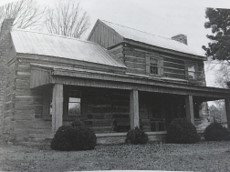
Grand Ole Opry House (1972-74, 2010) Briley Pkwy at McGavock
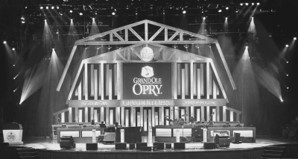
The owners of the Grand Ole Opry, WSM, and National Life and Accident Insurance Company commissioned the Los Angeles architectural firm of Welton Becket and Associates to design a modern home for the country music institution. Pierre Cabrol, principal architect, produced a massive 48,000 square foot structure of concrete and steel, yet his design has a rural sensibility. The interior has over 1,800 seats on the first floor with an additional 2,400 seats in the balcony. To keep a bit of the old Ryman Auditorium’s tradition, padded spaces on long pew-like rows were installed. President Richard M. Nixon dedicated the building at its opening on March 16, 1974. Since its opening, the Opryland Hotel complex (1977, 1983, 1987, 1996, 2010) has evolved into one of the largest hotels and convention centers in the United States. www.opry.com and www.marriott.com
Clover Bottom Mansion (1858) 2941 Lebanon Pike
Built as a country estate for a Stones River Plantation, Clover Bottom was an ornate example of the architectural transient then taking place from the Greek Revival to Italianate style. The mansion initially belonged to Dr. James Hoggatt. After the Civil War, the plantation gained a regional reputation for horse breeding. The name Clover Bottom derives from a famous race track that Andrew Jackson and others once operated along bottomland between the nearby Stones River and the plantation. In 1920, A.F. and R.D. Stanford acquired the property and began to subdivide it. The State of Tennessee in 1949 purchased the mansion and remaining grounds for the campus of the Tennessee School for the Blind, which relocated there by 1955. By the 1980s, the manor house was in great disrepair, but during the early 1990s through the the APTA, it was restored into offices for the Tennessee Historical Commission (THC), which serves as the state historic preservation office.
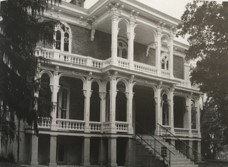
Hermitage Sites
Stone Hall (1918) & Eversong Cabin 1014 Stones River Rd.
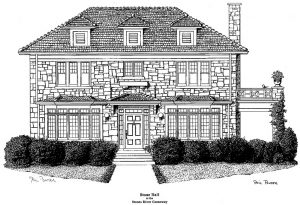
Nashville architect George D. Waller designed this two-story house for the family of Dempsey and Nora Cantrell, who lived here for several decades. Nora Cantrell had the Eversong cabin moved to the property to serve as a studio and guesthouse for visiting artists and poets. Nashville founder John Donelson first owned this land along the Stones River; his descendant, John Donelson, VII, married the Cantrell's daughter Angie, and they lived here in the mid-twentieth century. Metro Greenways acquired the property in 2007 and restored it for use as offices.
Cleveland Hall (1839-41) 4041 Old Hickory Blvd.
Stockley Donelson, the grandson of Nashville founder John Donelson and close confidant of Andrew Jackson, commissioned carpenters Joseph Reiff and William Hum to build this two-story five bay country house. As of the early 1970s, one cedar log slave house stood several hundred yards to the rear of the dwelling, but has since been moved to Belle Meade Plantation. Cleveland Hall in 1976 was listed as one the Tennessee Century Farms in Davidson County. Several acres still surround the historic house, but during the first decade of the new century a new subdivision also known as Cleveland Hall, was developed on former farmland.
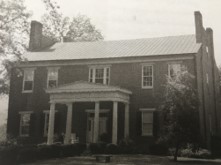
The Hermitage (1819,1831, 1834-36) 4580 Rachel's Lane

The best known historic antebellum house in Tennessee, The Hermitage was the plantation estate of Andrew Jackson, Tennessee legislator, judge, war hero, and President of the United States. The Hermitage experienced three distinct construction phases. The first came in 1819, after Jackson’s great success during the War of 1812, when he directed the construction of a brick two story, five bay Federal style dwelling, executed by builder Henry Reiff. Its facade was unadorned, save the semi-elliptical fanlight and sidelights of the entrance door and the flat brick arches over the window. Jackson also engaged English gardener William Frost to create a landscaped garden, known now as Rachel’s Garden, to the side of the new dwelling. In 1831, while President of the United States, Jackson commissioned architect David Morrison to design a significant expansion of the 1819 dwelling. Unfortunately, a fire in 1834 severely damaged The Hermitage and destroyed most of Morrison’s work. Jackson commissioned carpenters Joseph Reiff and William Hume to rebuild the mansion, following a Greek Revival Style. Archaeological investigations have focused on locating the property’s external slave quarters, including the log “Alfred’s Cabin,” dating to the 1840s, when Jackson owned about 150 slaves. Extant period outbuildings include the brick kitchen, smokehouse, and limestone spring house. Another important building on the estate from Jackson’s pre-presidential years is the Old Hermitage Church (1823, restored 1965), a one-story brick building across the Lebanon Road from the main residence. The Ladies Hermitage Association acquired the house and twenty-five acres from the Tennessee General Assembly in 1889. Later state legislatures granted the Association additional lands for the preservation of this significant historical and architectural landmark. Today The Hermitage is open to the public and visitors can purchase tickets to access the grounds, mansion, exhibit gallery, and store. An interpreter-led tour of the mansion, and a self-guided audio tour of the gardens, grounds, and other historic buildings is also available. www.thehermitage.com
Tulip Grove (1836) Lebanon Rd. at Rachel's Lane
This Greek Revival brick home belonged to Andrew Jackson Donelson, nephew of Rachel Jackson, and Emily Donelson, his wife. The house stands directly across Lebanon Road from The Hermitage. Completed in 1836, as carpenters Joseph Reiff and William Hume were finishing their renovations at The Hermitage, Tulip Gove features a Doric pedimented portico of four fluted Doric columns. Tulip Grove also has an important historic interior. Artist Ralph E.W. Earl marbleized the front plaster walls and grained the hallway door panels. After leasing the property in 1963, the Ladies Hermitage Association restored Tulip Grove. The Andrew Jackson Foundation operates it as a companion property to The Hermitage.
For More Information on Historical Sites:
